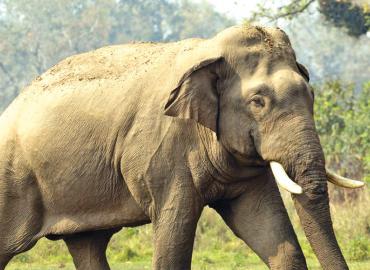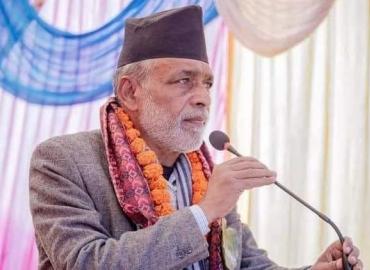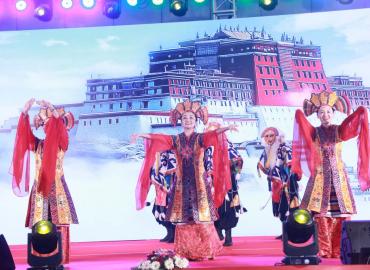Hile, Mar. 24: Khandi fabric, which used to be familiar in the Khalsa area of Dhankuta, is now on the verge of being history from the area. About four decades ago, khandi fabric weaving looms were found in every house in the Khalsa area. Due to poor economic conditions and lack of access to market, people from the area used to produce Khandi fabric at their own house using the local raw materials and home-made techniques.
In the past, people used to produce cotton and spin yarn out of the cotton. Afterwards they used to make clothing like shirts, coats, pants, dhotis, patukis and bed and blanket covers. Since other fabrics were not available in the village, people used the Khandi fabric for every possible clothing and household use, informed 85-year-old Dik Maya Rai of Tindevithan of Sahidbhumi Rural Municipality. "Even if there were other fabrics, we could not afford them,"
she added.
Due to expansion of market and improvement in the economic condition of the people, neither the Khandi fabric nor looms are easily seen in the village at present. Since imported fabrics are cheaper compared to locally manufactured Khandi fabric, people have started being dependent on imported fabric.
However, the Khandi fabric seems to be exclusive for high society people. This is the reason Shahidbhumi Rural Municipality had conducted training on Khandi fabric production.
The new generation has started producing the Khandi fabric after receiving training. But there is a real problem in sale and distribution since the production cost is very high. The fabric made in a natural way using completely domestic techniques costs more than Rs. 8,000 per set.
According to chairperson of Chhintang Women Community Prabha Parajuli, fabric produced by machines is cheap. Along with modernity, people have started using machines to manufacture fabric which look like the Khandi fabric. She said, people chose look-alike fabric over traditionally manufactured Khandi since it turns out to be more expensive due to its high production cost.
She informed that it takes around a week to produce one roll of Khandi fabric and wages alone are more than Rs. 3,500. Thus, after adding the price of raw materials we cannot sell it below Rs. 8,000, else we will be in loss, she added. But other Khandi look-alike fabrics are easily available in the market at Rs. 3,500 per roll.
Although the yarn for Khandi is available in the market, people need to hunt in the forest to collect other raw materials. Only in the Khalsa area, more than 100 people are now producing the Khandi fabric. Some of them have been producing commercially. But they have been facing problems in sale and market distribution. -The Rising Nepal






















